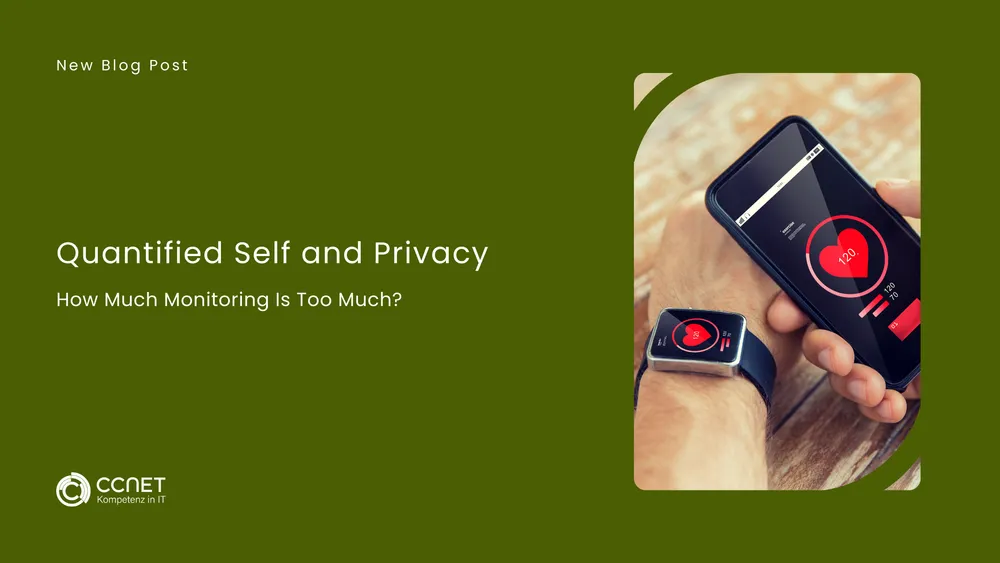
CCNet
Jun 11, 2025 • 2 min read

When Bluetooth Becomes a Data Trap: How insecure connections endager health data
Bluetooth is one of the most important technologies enabling wearable connectivity. Medical wearables rely on this wireless standard to sync data with smartphones or other devices. However, this convenience comes with a significant risk: inadequately secured Bluetooth connections can compromise sensitive health data and provide an entry point for attackers. In this article, we analyze the risks and explain how users and manufacturers can better protect themselves.
1. How Does Bluetooth Work in Medical Wearables?
Bluetooth enables short-range wireless communication. Wearables transmit collected health data to an app or cloud platform for storage and analysis. There are various Bluetooth standards that differ in range, energy efficiency, and security features.
2. What Are the Security Risks?
While Bluetooth communication is convenient, it poses serious risks when security measures are not strictly implemented:
-
Data Eavesdropping (Sniffing): Without strong encryption, attackers can intercept and read sensitive health data.
-
Man-in-the-Middle Attacks (MITM): Hackers can position themselves between the wearable and the connected device to manipulate data or impersonate a legitimate device.
-
Device Impersonation (Spoofing): An attacker may pose as a known wearable to interact with the user’s smartphone and steal data.
-
Bluejacking & Bluesnarfing: These attacks allow hackers to silently send messages or extract data from vulnerable Bluetooth devices.
3. Why Are Medical Wearables Particularly at Risk?
Because wearables often handle sensitive health data, their security is especially critical. However, many devices still rely on outdated Bluetooth protocols or weak encryption. Furthermore, manufacturers often fail to provide timely or regular security updates. These factors increase the risk of attacks—especially in unprotected environments like public spaces or hospitals.
4. Best Practices for Better Security
To make Bluetooth connections more secure, both manufacturers and users should follow these guidelines:
-
Enable Strong Encryption: Wearables should use end-to-end encryption to prevent eavesdropping.
-
Activate Bluetooth Only When Needed: Disabling Bluetooth when not in use helps reduce potential attack surfaces.
-
Use Secure Pairing Methods: Pairing should be performed using secure protocols like numeric comparison or passkey entry.
-
Regularly Install Firmware Updates: Users should ensure their devices are up to date to close known vulnerabilities.
-
Pair Devices in Trusted Environments: The first connection between a wearable and a smartphone should be established in a secure location to avoid MITM attacks.
Conclusion: Security Starts at the Connection
Bluetooth is essential for wearables—but without proper safeguards, it becomes a major vulnerability. Manufacturers must implement stronger encryption methods, and users should take an active role in managing their settings securely.
In the next blog post, we’ll address another critical topic:
“Mobile Apps as a Vulnerability – How Insecure Applications Threaten Patient Data”
FAQ about Wearables
How does Bluetooth work in medical wearables?
Bluetooth enables wireless transmission of health data from wearables to smartphones or cloud platforms. Different standards vary in range, energy efficiency, and security.
What risks are associated with insecure Bluetooth connections?
Without strong security measures, risks include data sniffing, man-in-the-middle attacks, device impersonation (spoofing), as well as bluejacking and bluesnarfing.
Why are medical wearables particularly vulnerable?
Because they handle highly sensitive health data, security is critical. Many devices still use outdated protocols, weak encryption, or receive security updates only irregularly.
How can users make Bluetooth connections more secure?
Users should activate Bluetooth only when needed, pair devices in trusted environments, use secure pairing methods, and install firmware updates regularly.
What responsibilities do manufacturers have?
Manufacturers need to implement modern encryption methods, deliver timely security updates, and design products in line with recognized security standards.


